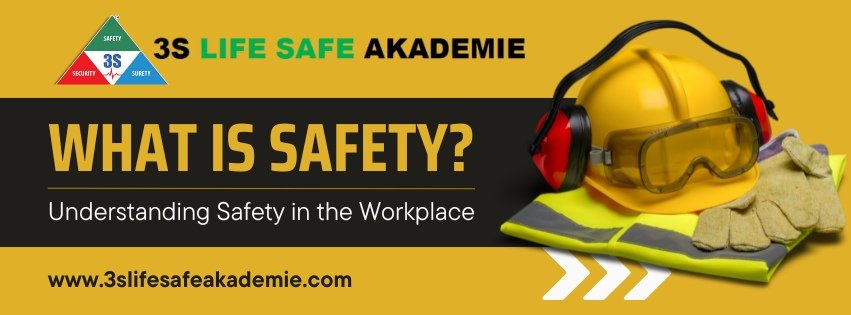
Posted by:- Sushant Mishra
03-05-2025
Safety refers to a condition of being protected from harm, danger, risk, or injury. It means creating an environment where people, processes, and systems are free from threats that can cause physical, emotional, or financial damage.
Safety isn't just about rules or equipment—it's a mindset and a way of living and working where we consistently take precautions to prevent accidents and protect human life.
Safety is the practice of preventing accidents and ensuring well-being.
Whether you're at home, on the road, in a school, or at a construction site, safety means taking the right steps to make sure everyone is secure—physically and mentally.
Let's break down the major aspects that define what safety truly involves:
This is the most common and visible form of safety. It involves:
Not all dangers are visible. Emotional safety includes:
This refers to protecting people from health risks:
This means ensuring the environment is not harmed during any activity:
It's about making sure the way we do things is safe:
Let's think in real-life terms.
Imagine you're cooking in a kitchen. If you ignore safety—leave oil unattended, touch hot pans without gloves, or let wires hang near the stove—you increase the chance of an accident. But with a few smart precautions, you can enjoy cooking without harm.
Now apply the same concept to factories, offices, schools, roads, and public places. Safety keeps lives, property, and futures protected.
Safety isn't only about helmets and signs. It's about:
Let's look at some simple, everyday situations where safety plays an important role:
In all these cases, small choices lead to big safety outcomes. It's about being mindful and proactive, no matter where you are.
Workplace safety refers to the practices, policies, and precautions put in place to protect employees from injuries, illnesses, and other job-related hazards. It is the commitment to creating a work environment where everyone can do their jobs without being exposed to unnecessary risk—physically, mentally, or emotionally.
When we talk about safety at work, we're not just talking about wearing helmets or posting “Caution: Wet Floor” signs. It's a holistic approach that involves:
A safe workplace reduces accidents, builds trust, and boosts employee morale. Now let's go deeper into the key components that make workplace safety effective.
Every job, no matter how simple or complex, carries some level of risk. The first step to preventing accidents is to identify these hazards early.
Common Workplace Hazards Include:
Risk assessment is a planned activity where safety officers or supervisors inspect the workplace, observe processes, and identify areas where harm could occur.
It's not enough to identify dangers—people must be taught how to avoid or handle them. Safety training ensures that employees know what to do before an accident happens, not after.
Safety Training Should Cover:
Training should be ongoing, not just a one-time event. When new equipment, materials, or procedures are introduced, updated training is essential.
Governments and industry bodies have laid down strict laws and standards to protect workers. In India and globally, many organizations follow safety frameworks like:
Key Workplace Safety Standards:
Employers must ensure they:
Regulatory enforcement ensures that safety isn't left to chance or treated as an option—it's a requirement.
Workplace safety is more than just a legal requirement—it directly impacts people's lives and the success of an organization.
First and foremost, it protects human life. By reducing the chances of injuries, illnesses, and accidents, safety measures ensure that employees return home safe every day. No job is worth risking a life.
Secondly, maintaining a safe workplace saves money. Accidents can lead to costly medical bills, legal actions, equipment damage, and even long-term compensation claims. Prevention is always cheaper than recovery.
A safe environment also enhances a company's reputation. When an organization is known for prioritizing safety, it attracts better talent, earns respect from clients, and builds trust with stakeholders.
Moreover, safety measures lead to higher productivity. When employees feel safe, they're more confident, focused, and motivated to perform at their best—without fear of getting hurt.
Lastly, promoting safety sends a powerful message: that the company cares about its people. This builds a culture of respect, responsibility, and shared ownership that benefits everyone.
In short, safety is not an expense—it's an investment in people, performance, and long-term success.
Safety is not the duty of just one person or department—it's a shared responsibility that involves everyone. Employers must provide and maintain safe environments. Supervisors must enforce safety rules and lead by example. Employees must follow safety protocols, report hazards, and look out for each other. Even visitors must be made aware of potential risks.
But beyond roles and titles, safety starts with you—whether you're a student, worker, driver, or parent. One careless moment can change a life forever, but one smart, proactive decision can protect many. So the next time you notice a wet floor, a frayed wire, or someone ignoring safety gear—speak up, take action, and be the reason someone goes home safe today.
Because in the end, the goal is simple: get the job done safely and return home in the same condition—or better—than when you arrived.
At 3S Life Safe Akademie, we help organizations build a strong safety culture through NEBOSH, IOSH, and other internationally recognized courses. We offer: